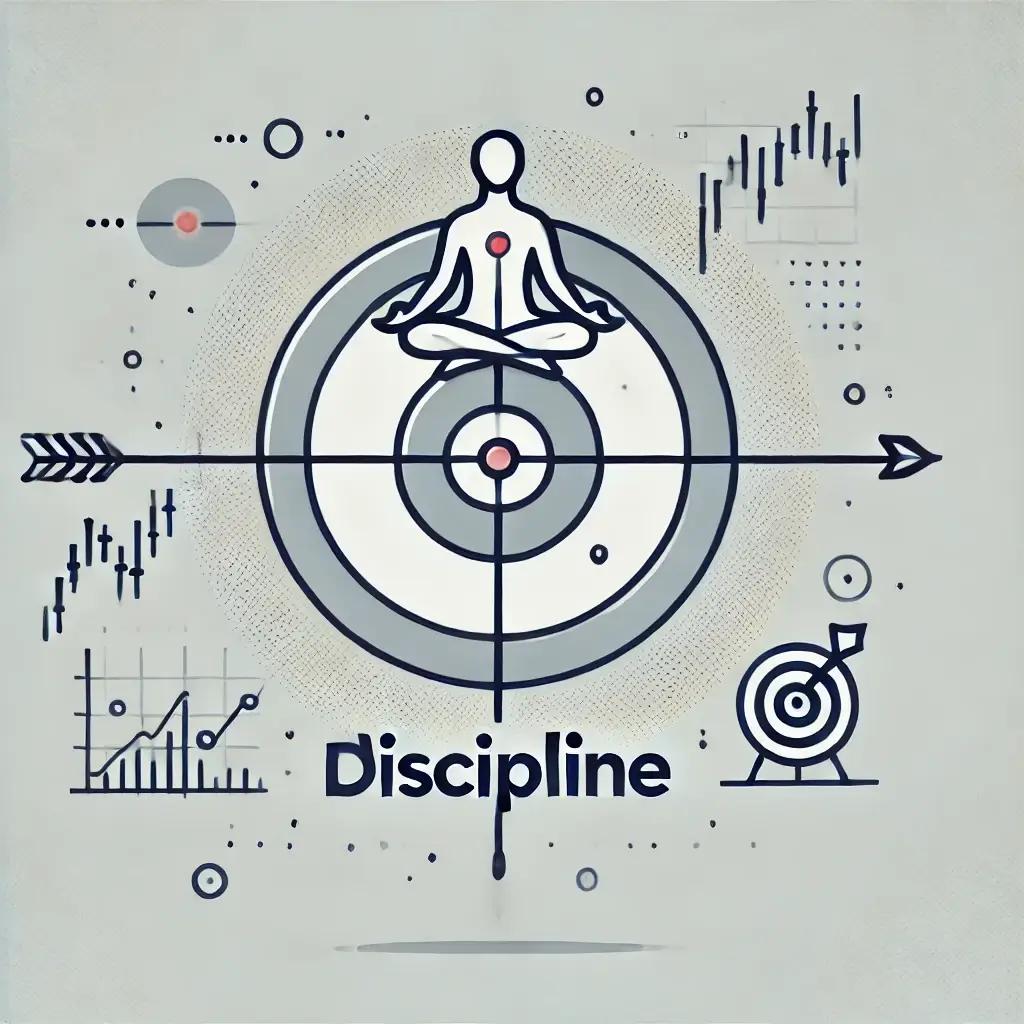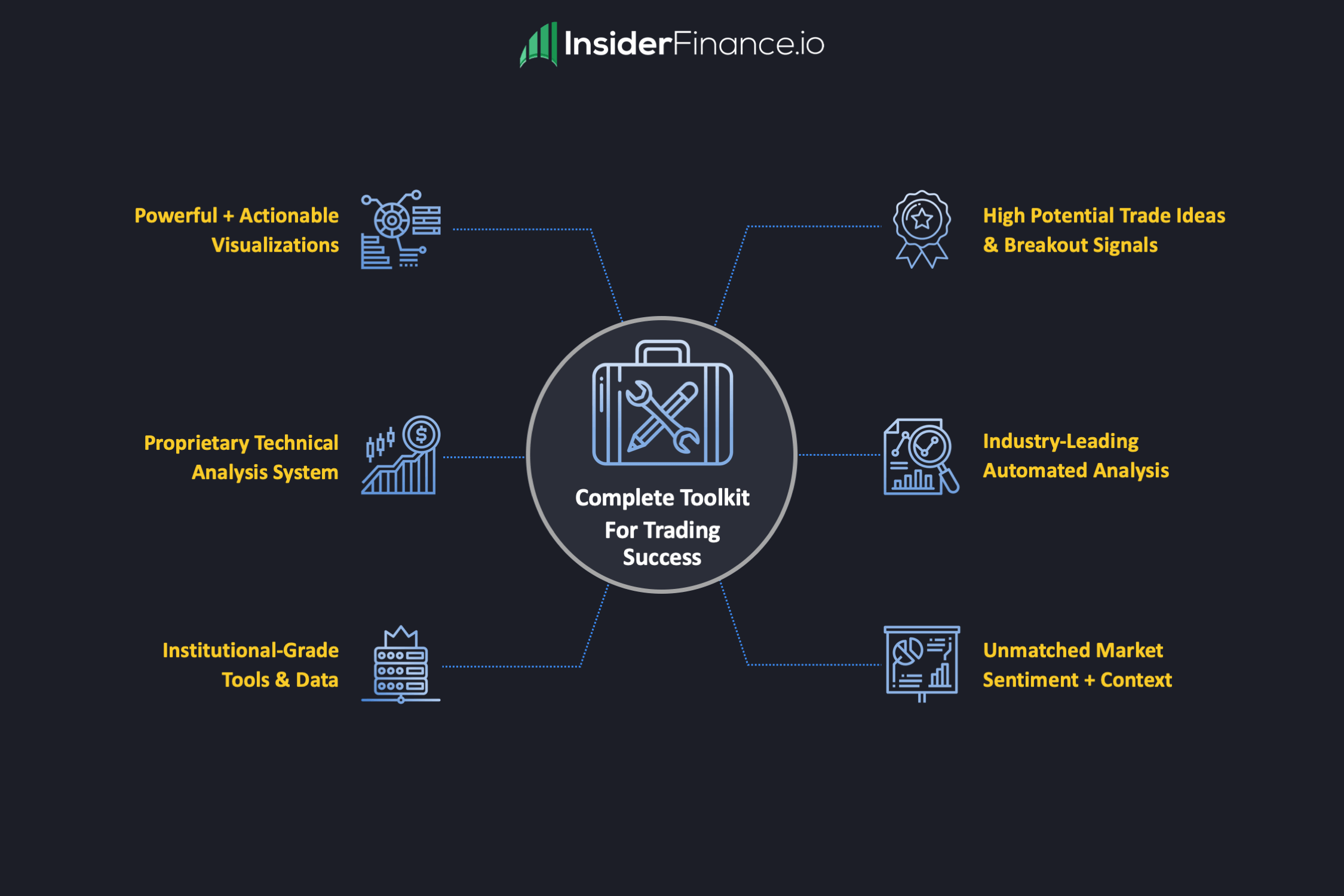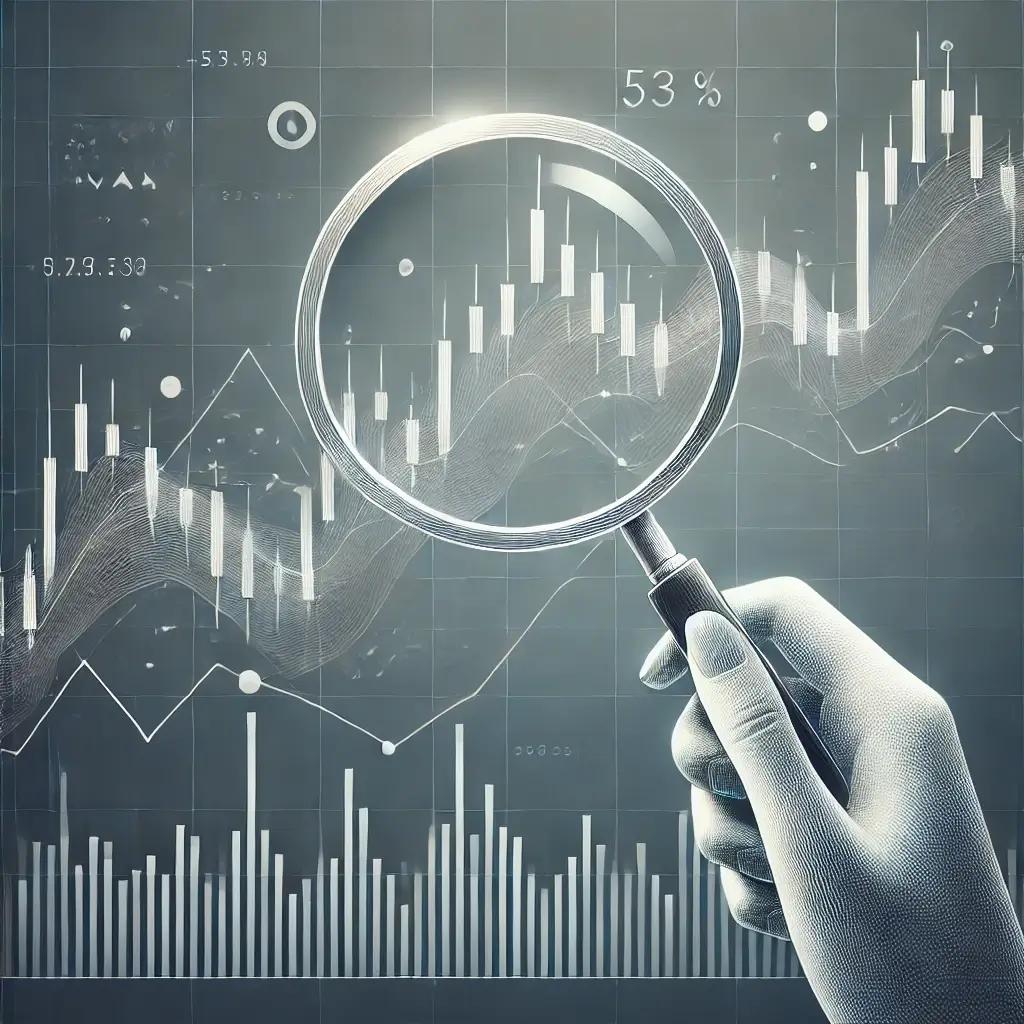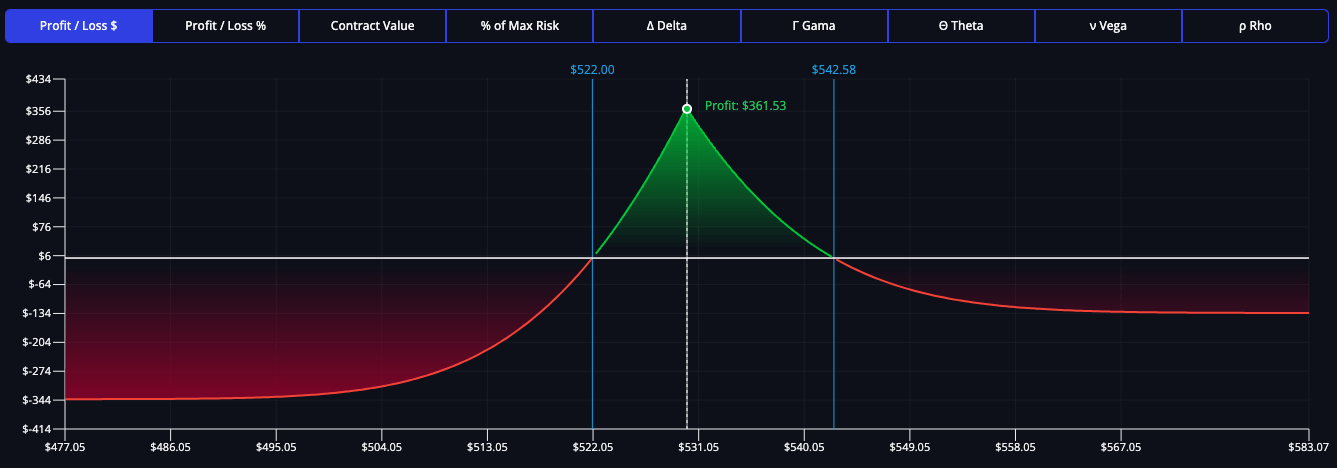Master Day Trading with Secrets from Top Traders

Imagine turning your daily trades into a consistent stream of income, mastering the market's volatility, and executing flawless strategies like the world’s elite traders.
What if you could unlock the secrets behind their success and apply them to your trading game?
Get ready to dive into the minds of the most successful day traders and discover the key lessons that can transform your trading journey forever.
Risk Management

Stop-Loss Orders
One of the cardinal rules in day trading is to always use stop-loss orders. These orders automatically close a trade at a predetermined price to limit potential losses. By setting a stop-loss order, traders protect themselves from significant losses that could devastate their trading capital. This safety net is crucial in the volatile world of day trading, where market conditions can change rapidly.
- Paul Tudor Jones: World-renowned day trader and a firm advocate of stop-loss orders. Jones, famous for predicting the 1987 stock market crash, emphasizes protecting capital over making money. He states, “Don’t focus on making money; focus on protecting what you have.”
- Alexander Elder: Author of "Trading for a Living," Elder learned a hard lesson when he once neglected to set a stop-loss, resulting in a substantial loss. This experience solidified his belief in the critical role of stop-loss orders in trading.
Position Sizing
Position sizing refers to the number of units invested in a particular trade. To manage risk effectively, it's recommended that traders never risk more than 1-2% of their trading capital on a single trade. This conservative approach ensures longevity in trading by preventing large losses that could deplete the entire account, allowing traders to stay in the game longer and recover from setbacks.
- Larry Hite: A pioneer of system trading, Hite is known for his risk-averse strategies. He famously said, “If you don’t bet, you can’t win. If you lose all your chips, you can’t bet,” emphasizing the importance of position sizing to avoid catastrophic losses.
- Ed Seykota: Market wizard Seykota stresses position sizing as fundamental to cutting losses. He states, “The elements of good trading are: (1) cutting losses, (2) cutting losses, and (3) cutting losses. If you can follow these three rules, you may have a chance.”
Risk-Reward Ratio
Successful traders aim for a risk-reward ratio of at least 1:2, meaning the potential reward should be at least twice the amount risked. This strategy increases the chances of profitability by ensuring that the potential gains significantly outweigh the risks, thereby increasing their chances of profitability over time.
- Jesse Livermore: A legendary trader who made and lost several fortunes in the early 20th century, Livermore always sought trades where the potential reward was much greater than the risk. He noted, “The game of speculation is the most uniformly fascinating game in the world. But it is not a game for the stupid, the mentally lazy, the person of inferior emotional balance, or the get-rich-quick adventurer. They will die poor.”
- Mark Minervini: Winner of the U.S. Investing Championship in 1997 with a 155% return, Minervini advocates for a minimum risk-reward ratio of 1:3, meaning that for every dollar risked, the potential reward should be three dollars. He advises, “You must take only those trades where the potential gain is at least three to five times the loss you will incur if the trade goes against you. This way, your batting average doesn’t have to be very high to be a successful trader.”
Discipline and Consistency

Trading Plan
A detailed trading plan is the backbone of a disciplined trading approach. This plan should outline the trader’s strategy, including entry and exit points, risk management techniques, and specific goals. Sticking to a well-crafted trading plan helps traders avoid impulsive decisions driven by emotions and maintain consistency in their trading activities.
- Linda Raschke: A professional trader and author, Raschke emphasizes the importance of having a detailed trading plan and adhering to it rigorously. She says, “If you deviate from your trading plan, you’re not trading, you’re gambling.” Her meticulous planning and adherence to strategies contribute significantly to her success.
- Steve Burns: An experienced trader and author who runs the popular blog New Trader U, Burns advocates for a comprehensive trading plan, including entry and exit rules, risk management strategies, and specific goals. He shares, “A trading plan removes emotion and enables a trader to act based on logic and strategy, rather than on impulsive decisions.”
Emotional Control
Emotional discipline is crucial in day trading. The ability to control emotions, such as fear and greed, can make the difference between success and failure. Traders must learn to stay calm and stick to their trading plan, regardless of market conditions. Emotional control helps in making rational decisions based on analysis rather than reactions to market volatility.
- Marty Schwartz: A successful Wall Street trader and author of “Pit Bull: Lessons from Wall Street’s Champion Day Trader,” Schwartz attributes much of his success to his ability to control his emotions. He once said, “I always laugh at people who say, ‘I’ve never met a rich technician.’ I love that! It’s such an arrogant, nonsensical response. I used fundamentals for nine years and got rich as a technician.”
- Mark Douglas: Author of “Trading in the Zone,” Douglas emphasizes the importance of emotional discipline. He believes a trader’s mindset is as important as their strategy. Douglas stated, “Trading doesn’t just reveal your character, it also builds it if you stay in the game long enough.”
Routine
Establishing a daily routine is another key to success. This routine should include pre-market analysis to identify potential trading opportunities and post-market reviews to evaluate performance. A consistent routine helps traders stay focused, organized, and prepared for each trading day.
- Paul Rotter: A day trader who reportedly made over $65 million annually at the peak of his career known as the “Flipper,” Rotter’s success is partly due to his rigorous daily routine, which includes extensive pre-market analysis and post-market reviews. He says, “I never take a position without first knowing exactly what I am going to do.”
- Rayner Teo: A successful trader and founder of TradingwithRayner, Teo recommends establishing a daily routine that includes reviewing the previous day's trades, conducting pre-market analysis, and preparing for the trading day ahead. He states, “A good routine keeps you grounded and ensures that you approach each trading day with a clear and focused mind.”
HIGH POTENTIAL TRADES SENT DIRECTLY TO YOUR INBOX
Add your email to receive our free daily newsletter. No spam, unsubscribe anytime.
Market Analysis and Strategy

Technical Analysis
Technical analysis involves studying chart patterns, indicators, and price action to identify trading opportunities. Mastering technical analysis allows traders to make informed decisions based on historical data and market trends. Key tools include moving averages, candlestick patterns, and various indicators like RSI and MACD.
- John Murphy: A prominent figure in technical analysis and author of "Technical Analysis of the Financial Markets," Murphy emphasizes the importance of understanding chart patterns, indicators, and price action. He states, “The best way to measure market sentiment is to use technical analysis.” His work highlights how mastering these tools can provide traders with a significant edge in identifying trading opportunities. Murphy's techniques help traders make informed decisions based on historical price movements and trends.
- Jack Schwager: Author of the "Market Wizards" series, Schwager shares insights from successful traders who rely on technical analysis. Bruce Kovner, featured in his book, said, “In order to win at the markets, you have to look at a lot of charts.” Kovner’s success underscores the value of mastering technical analysis to understand market patterns.
Fundamental Analysis
While technical analysis focuses on price movements, fundamental analysis looks at macroeconomic indicators and news that impact market movements. Understanding the broader economic context, such as interest rates, employment data, and geopolitical events, helps traders anticipate market shifts and make better-informed trading decisions.
- Peter Lynch: Renowned for his use of fundamental analysis, Lynch managed the Magellan Fund at Fidelity Investments, achieving an average annual return of 29.2% over 13 years. He said, “Know what you own, and know why you own it.” Lynch’s approach involves deep analysis of the underlying economic factors and company fundamentals that drive market movements. His success demonstrates the power of understanding economic factors and company fundamentals.
- Warren Buffett: Although primarily a long-term investor, Buffett’s emphasis on fundamental analysis provides valuable lessons for day traders. His meticulous approach to analyzing companies' financial health, management quality, and market position has made him one of the wealthiest individuals in the world. Buffett advises, “Price is what you pay. Value is what you get,” highlighting the importance of intrinsic value and macroeconomic indicators.
Backtesting
Before implementing a trading strategy in live markets, it’s crucial to test it on historical data. Backtesting involves applying a strategy to past market data to evaluate its effectiveness. This process helps traders identify potential flaws and make necessary adjustments to improve the strategy's performance in live trading.
- Ray Dalio: Founder of Bridgewater Associates, the world's largest hedge fund, Dalio advocates for backtesting trading strategies. He has said, “He who lives by the crystal ball will eat shattered glass,” emphasizing the importance of relying on tested strategies rather than speculation. Dalio’s rigorous testing of strategies on historical data ensures their effectiveness before applying them in live markets, contributing to Bridgewater's consistent returns.
- Jesse Livermore: Considered one of the greatest traders of all time, Livermore believed in the power of backtesting. He once said, “There is nothing new on Wall Street. Whatever happens in the stock market today has happened before and will happen again.” This belief highlights the importance of validating strategies against historical data to refine approaches and increase confidence in trades.
Continuous Learning and Adaptation

Education
Investing time in education is essential for continuous improvement. Traders should regularly engage with courses, books, webinars, and other resources to stay updated on market developments and new trading techniques. Learning from experienced traders and staying informed about market dynamics enhances a trader's skill set.
- Paul Tudor Jones: A legendary hedge fund manager, Jones attributes much of his success to his commitment to learning. He once said, “The secret to being successful from a trading perspective is to have an indefatigable and an undying and unquenchable thirst for information and knowledge.” Jones’ dedication to expanding his knowledge base has been key in adapting to changing market conditions and maintain his edge over the years.
- Brett Steenbarger: A trading psychologist and author, Steenbarger emphasizes that education should be ongoing. He states, “The best traders are always students of markets and of themselves.” Continuous learning helps traders better understand market dynamics and refine their strategies.
Adaptability
The financial markets are constantly evolving, and successful traders must be adaptable. Strategies that work in one market condition might not work in another. Therefore, traders need to be flexible and ready to adjust their approaches based on current market conditions and emerging trends.
- Bruce Kovner: Founder of Caxton Associates and one of the most successful traders in the world, Kovner highlights the importance of flexibility. Kovner started trading commodities in the late 1970s and quickly learned the importance of being flexible with his strategies. He is known for saying, “You have to be willing to make mistakes regularly; there is nothing wrong with it. Michael Jordan makes a lot of mistakes; a great basketball player makes a lot of mistakes. The key is to recognize them and correct them.” Kovner’s adaptability has been a significant factor in his long-term success.
- Stanley Druckenmiller: Money manager for George Soros and later founded Duquesne Capital, Druckenmiller has been highly successful due to his ability to adapt to market conditions. He states, “It’s not whether you’re right or wrong that’s important, but how much money you make when you’re right and how much you lose when you’re wrong.” His flexibility in shifting strategies has been crucial to his trading success.
Mentorship
Seeking mentorship from seasoned traders can provide invaluable insights and guidance. Mentors can share their experiences, offer practical advice, and help novice traders avoid common pitfalls. Learning from those who have already achieved success in day trading can significantly accelerate the learning curve.
- Richard Dennis: Known as the “Prince of the Pit,” Dennis made a fortune in commodities and mentored a group of novice traders through his Turtle Trader experiment. Dennis believed that with proper training and mentorship, anyone could become a successful trader. He famously said, “I always say that you could publish my trading rules in the newspaper and no one would follow them. The key is consistency and discipline.” His mentorship proved that with the right guidance, even those with no prior trading experience could achieve significant success.
- Tony Robbins: A motivational speaker and life coach, Robbins has mentored numerous successful traders and investors. He emphasizes learning from those who have achieved the results you want, stating, “If you want to be successful, find someone who has achieved the results you want and copy what they do, and you’ll achieve the same results.” This principle of mentorship has helped many traders accelerate their learning curve and avoid common pitfalls.
Technology and Tools

Trading Platforms
Using reliable and advanced trading platforms is crucial for success. These platforms provide real-time data, fast execution, and various analytical tools that help traders make informed decisions. Choosing a robust trading platform can enhance trading efficiency and effectiveness.
- Paul Rotter: Known as the “Flipper,” Rotter attributes a significant part of his success to advanced trading platforms like Eurex, which allowed him to execute trades at lightning speed. He emphasizes, “The key to successful trading is speed and efficiency. Having the right tools can make the difference between a winning and a losing trade.”
- Tim Sykes: Turned his Bar Mitzvah money into millions through penny stock trading using platforms like E*TRADE and Thinkorswim. Sykes states, “The right platform is like a trader's best friend. It provides the necessary tools to analyze the market and execute trades efficiently.”
Analytical Tools
Leveraging tools for technical analysis, such as charting software and economic calendars, allows traders to conduct thorough market analysis. These tools provide insights into market trends and potential trading opportunities, helping traders make data-driven decisions.
- John Bollinger: Creator of Bollinger Bands, Bollinger revolutionized technical analysis with his innovative tool used to identify overbought and oversold conditions. He asserts, “A technical indicator alone is not sufficient for trading decisions. It needs to be integrated with other forms of analysis to be truly effective.”
- Mark Minervini: Winner of the U.S. Investing Championship, Minervini uses a variety of tools like moving averages, relative strength indicators, and volume analysis to make informed trading decisions. He emphasizes, “Successful trading requires a combination of tools and techniques. You need to use the right mix of indicators to get a comprehensive view of the market.”
Automation
Automated trading systems can execute trades based on predefined criteria, removing the emotional element from trading. These systems can help traders take advantage of market opportunities even when they are not actively monitoring the markets. Automation ensures consistent execution of trading strategies, potentially improving overall performance.
- David Shaw: Founder of D.E. Shaw & Co., Shaw's firm employs complex algorithms to execute trades, making it one of the most successful hedge funds in the world. Shaw notes, “The use of automated systems allows us to process vast amounts of data and execute trades with precision and speed that human traders cannot match.”
- James Simons: Founder of Renaissance Technologies and creator of the Medallion Fund, Simons uses quantitative models and automated systems for outstanding performance. He believes, “By relying on data and automated processes, we remove human emotion and error from trading decisions.”
Achieving Trading Greatness: Your Path Forward

Becoming a successful day trader requires more than just knowledge—it demands the relentless application of key strategies, emotional control, and continuous learning. By adopting the insights and practices of the world’s best traders, you can navigate the complexities of the market with confidence and skill.
But you don’t have to do it alone. InsiderFinance offers a suite of tools designed to enhance your trading experience and help you achieve greatness:
- Real-Time Market Data: Gain access to live market data and news feeds, allowing you to stay informed about macroeconomic indicators and news events that could impact your trades.
- Advanced Analytics: Harness powerful analytical tools to master technical analysis, just like the pros. Get real-time insights and comprehensive data to make informed decisions.
- Automated Alerts: Stay ahead of the market with automated technical analysis alerts that align with your trading strategies. This ensures you never miss a critical opportunity or fail to execute a stop-loss.
- Educational Resources: Access free trading courses and guides that keep you learning and adapting to new market conditions. Continuously improve your skills and strategies.
Embrace these resources and continue learning from the best. With determination, the right tools, and a strategic approach, you can transform your day trading efforts into consistent success.
Start your journey with InsiderFinance today and take the first step towards achieving trading greatness.
HIGH POTENTIAL TRADES SENT DIRECTLY TO YOUR INBOX
Add your email to receive our free daily newsletter. No spam, unsubscribe anytime.
FAQs
What are the key lessons from the world’s best day traders?
Successful day traders emphasize risk management, discipline, market analysis, continuous learning, and advanced technology.
Why is risk management important in day trading?
Risk management protects trading capital, minimizes losses, and ensures longevity in the market by using strategies like stop-loss orders and proper position sizing.
How do top traders maintain discipline in their trading activities?
They develop detailed trading plans, maintain emotional control, and follow consistent daily routines that include pre-market analysis and post-market reviews.
What role does technical analysis play in day trading?
Technical analysis helps traders identify market trends and patterns, making informed decisions based on historical price movements and indicators.
Why is continuous learning crucial for day traders?
Markets constantly evolve, so traders must continuously educate themselves, adapt strategies, and seek mentorship to stay competitive and successful.
How can advanced technology enhance day trading performance?
Advanced trading platforms, analytical tools, and automation increase efficiency, precision, and the ability to execute trades swiftly and effectively.
What is the benefit of backtesting trading strategies?
Backtesting allows traders to test their strategies on historical data, ensuring their effectiveness and reliability before applying them in live markets.
How do successful traders use fundamental analysis?
They analyze macroeconomic indicators and company fundamentals to understand the broader economic context and make better-informed trading decisions.
What tools can help traders manage their emotional control?
Psychological tools, educational resources, and community support can help traders maintain discipline and avoid decisions driven by fear or greed.
What are the benefits of using InsiderFinance for day trading?
InsiderFinance offers advanced analytics, real-time market data, customizable charting, automated technical analysis alerts, and more to enhance trading success.








